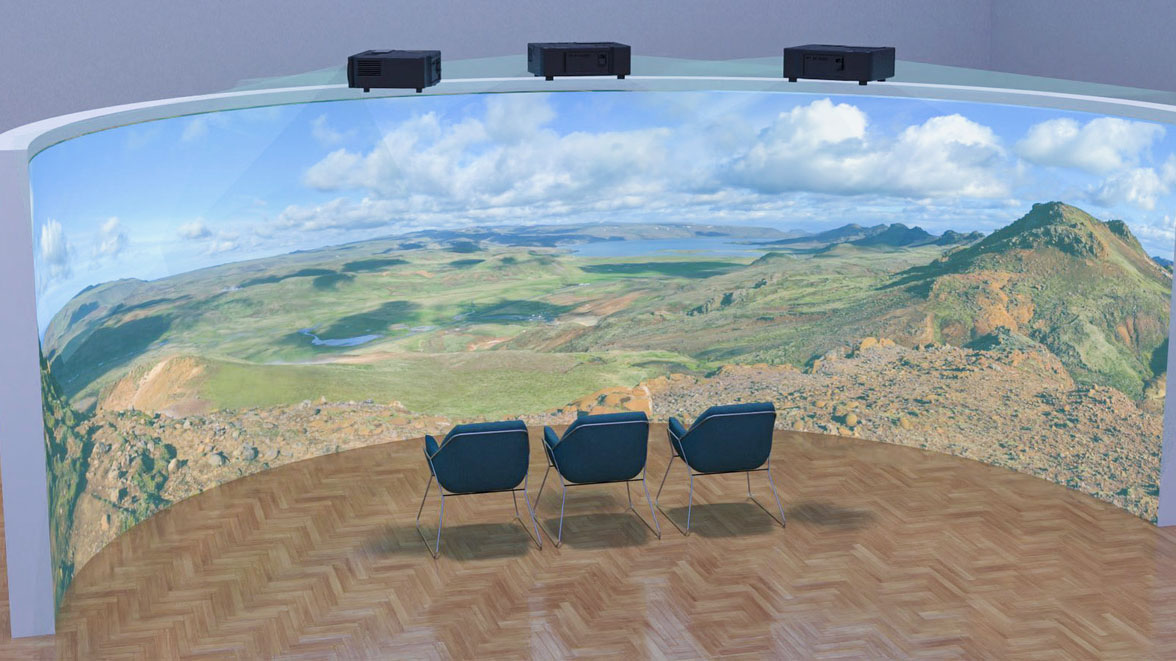These Immersive Virtual Reality Applications Support Alzheimer’s Patients
Dot2Dot Communications selected Scalable Display Technologies for immersive environments.

Dot2Dot Communications is integrating immersive virtual reality environments in healthcare applications to support patients living with Alzheimer’s. The company created a solution for healthcare facilities that would simulate the same experience—without headsets. It selected Scalable Display Technologies to automatically warp and blend multiple projectors across a 20-foot projection to create a single seamless display.
[Watch This Children's Treatment Room Transform to a Peaceful Sanctuary]
“The project evolved from the concept of providing visual therapy to patients who have Alzheimer’s,” explained Shawn O’Brien, creative technology for Dot2Dot Communications. “A colleague was working on a project utilizing virtual reality (VR) technology for visual therapies. Therapy is delivered for individuals with Alzheimer’s by showing familiar individuals, places and experiences. WishPlay is curating the content for these applications. The real magic is in their content creation specific to the patient."
Alzheimer’s Disease (AD) is the most common form of dementia, a general term for memory loss and other cognitive abilities interfering with daily life. Immersive virtual reality presents new possibilities for healthcare applications, specifically memory loss in Alzheimer’s patients. It creates the perception of a real-world environment by surrounding the user in memorable content, gathering images, sounds and other stimulation, and distributing the content using technology to engage the patient in the created environment. Healthcare professionals can immerse their patients in simulated environments to invoke exposure to a specific experience and target emotional responses.
“Previously, the healthcare facilities were utilizing VR headsets to deliver the content to the patients," said O'Brien. "The headsets required a cloth application to provide comfort to the patient. The healthcare provider had to disinfect the device between each patient to eliminate the spread of any illness. This became increasingly challenging during COVID-19 restrictions. Additionally, the devices were large and unwieldy for the patient. The concept of VR was fantastic, but it created a few challenges specific to the healthcare environment.
“We designed an environment dedicated to the purpose of immersive virtual reality for Alzheimer’s patients. The permanent space enabled us to acoustically treat the space and integrate a permanent display solution. We evaluated a few different display technologies. We considered direct view LED, LCD, front projection and rear projection. Ultimately, we selected front projection because of the subtle video display. It was softer for patient interaction in this specific environment. Additionally, front projection allowed us to build larger displays.
[Ready Player One: 9 Media Players for Your Next Digital Signage Experience]
A daily selection of features, industry news, and analysis for AV/IT professionals. Sign up below.
“Scalable’s technology is incredible because of the user experience. You don’t have to be a professional projectionist to utilize their software. Their optical sensors and cameras provide intricate details into the projector’s throw. Scalable automatically calibrates the projectors based on the details gathered. Scalable is easy to use but provides a high-quality edge-blending and warping solution. Scalable’s software created a seamless solution that delivered video across a peripheral 180-space projection screen."
The AVNetwork staff are storytellers focused on the professional audiovisual and technology industry. Their mission is to keep readers up-to-date on the latest AV/IT industry and product news, emerging trends, and inspiring installations.
